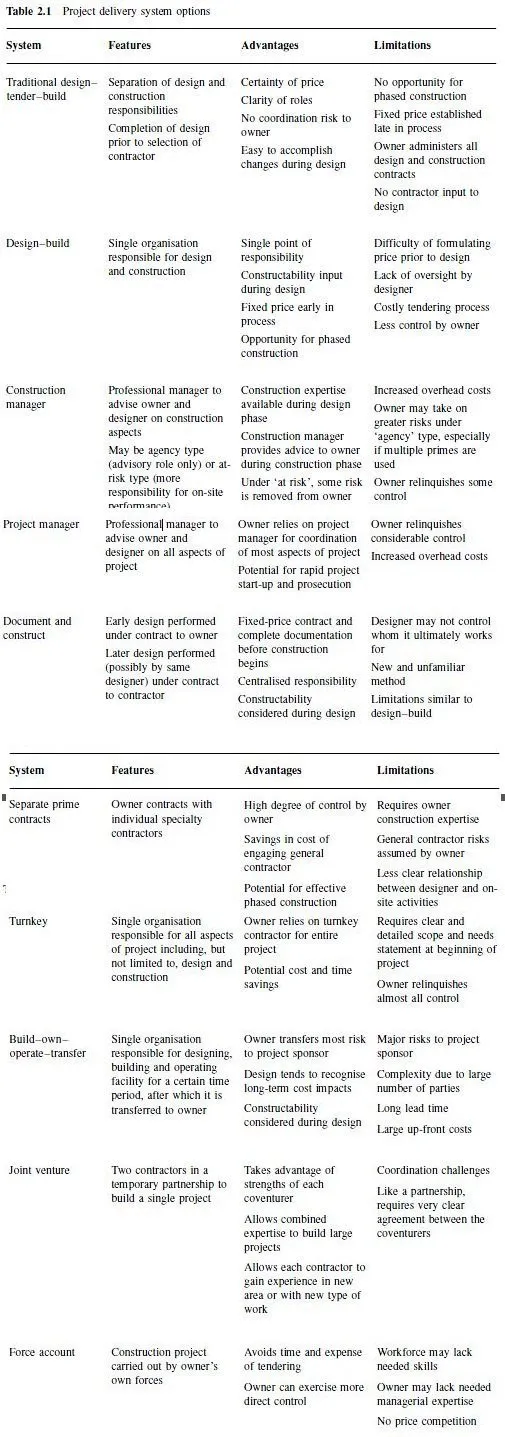The New Zealand Conditions of Contract for Building and Civil Engineering Construction (Standards New Zealand Paerewa Aotearoa, 1998) describe a measure-and-value contract:
The Principal shall pay the Contractor for the measured quality as determined by the Engineer of each item carried out at the rate set out in the Schedule of Prices [and in the case of Variations in accordance with Section 9].
In some other parts of the world, such a contract might be designated as a unit-price contract. In contrast to the lump-sum contract, this method determines the amount the contractor will be paid as the project proceeds by requiring that the actual quantities of finished product be measured and then multiplied by pre-agreed per-unit prices. Contractors provide tenders based on estimated quantities provided by the owner, so that each tenderers price is based on a common set of quantities. Thus, prior to the work, the tender prices are based on estimated quantities, whereas during and after the work, the payment is based on actual quantities. In a later section we shall describe a process for developing a unit-price tender. Suffice it to say here that a contractors unit prices must cover not only direct costs but also indirect costs, overheads, contingencies and profit; the contractor is paid only for items on the quantity list and paid at the pre-agreed unit prices.
This approach is well suited to projects whose quantities are not well defined in advance of the start of field work. An example might be pile driving, where piles are to be driven to refusal. The owner might provide information that a total of 60 such piles are to be driven, with an estimated depth of 12 metres each. Thus, each prospective contractor would provide a unit price to drive the estimated 720 linear metres of piling. If the successful tenderer has submitted a unit price of US$ 150 per linear metre and if the actual quantity placed is 720 linear metres, the contractor will be paid 720 × US$ 150 = US$ 108 000 for this item. If, however, the actual quantity turns out to be 685 linear metres, the payment would be US$ 102 750, whereas, if the actual quantity is 740 linear metres, the payment for this item would be US$ 111 000. Total payment to the contractor will be a collection of items in addition to the piling, such as excavation, backfill, concrete, paving and the like.
If the actual quantity varies substantially (say, more than 10% in some jurisdictions) from the estimated quantity, many conditions of contract provide for a means of adjusting the unit prices appropriately. The New Zealand Conditions of Contract for Building and Civil Engineering Construction (Standards New Zealand Paerewa Aotearoa, 1998) provide as follows:
Any quantities given in the Schedule of Prices are provided for the purpose of evaluating tenders and may be taken as a reasonable assessment of the quantities involved in the Contract Works. Where the actual quantity of any single item differs from that given in the Schedule of Prices to such an extent as to make the scheduled price for that or any other item unreasonable then the change in quantity shall be treated as if it was a Variation. In this document, a Variation has special meaning, and a strict process that seeks to be fair to both owner and contractor is set forth to provide recompense for the contractor.
For the owner, this approach has the advantage of removing some risk to the contractor, thus leading to somewhat smaller contingencies. Also, pre-tender documents may be prepared in less detail than under the lump-sum contract, although they must be in sufficient detail to allow tenderers to assess the overall magnitude and complexity of the work. However, under the unitprice/ measure-and-value method, the final project cost cannot be known with certainty until the project is complete. Furthermore, an effort is required by the owner or owners representative to track actual quantities by some means of measuring counting truckloads, weighing steel and the like. From the contractors viewpoint, some of the risk in the bidding process is removed, because payment is based on actual quantities rather than on a lump sum. Also, there is a possibility of unanticipated profit if the actual quantities are greater than forecast (but not as great as would require a renegotiation or Variation); in this case, the fixed costs should have been covered by the original quantities. On the other hand, lower-than-expected profits will result if actual quantities are lower than estimated. Another disadvantage to the contractor is the effort required to keep track of quantities. For a US perspective on unit price contracts, see Bennett (1996), Bockrath (1999) and Clough and Sears (1994).
